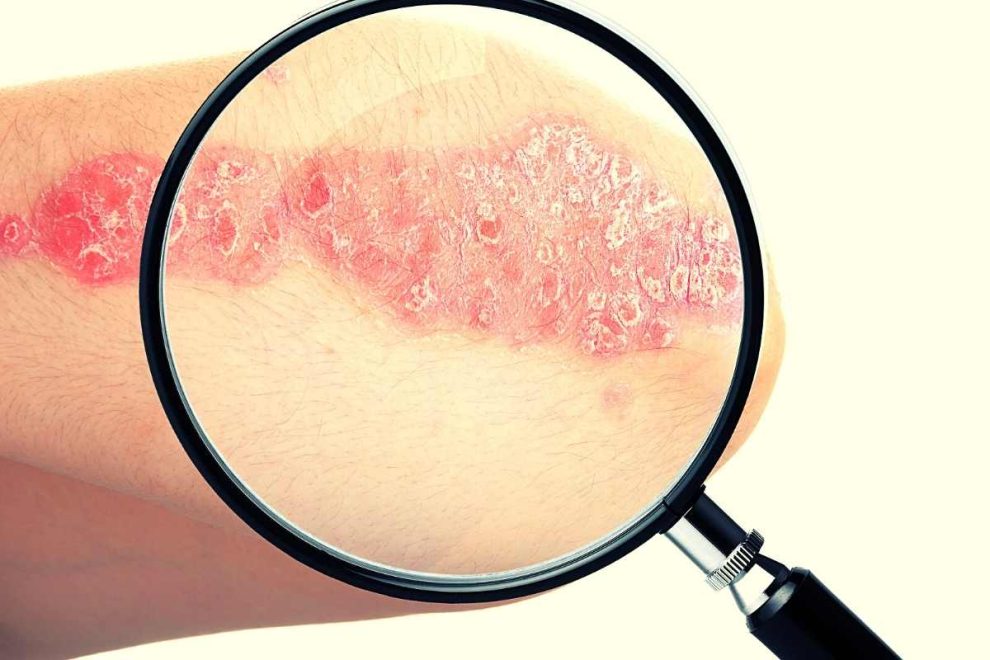The condition of psoriasis is one of the most common chronic skin conditions that affect millions of people around the world. Psoriasis has different types, each of which has its own symptoms and treatment options. In this article, we’ll explore the different types of psoriasis.
1. Plaque psoriasis
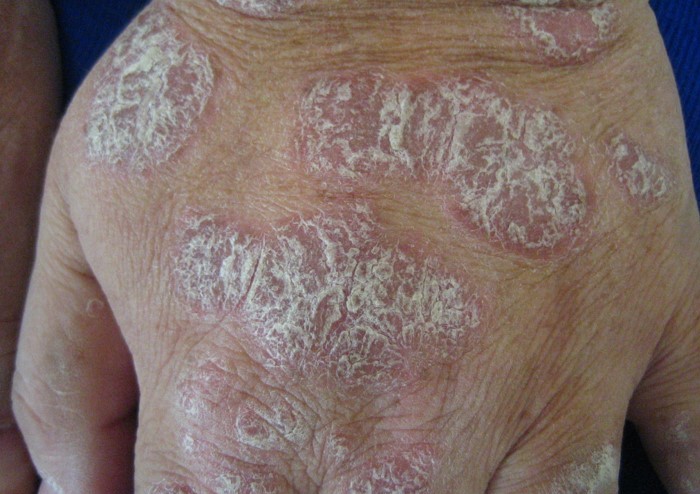
Credit: psoriasis.org
Approximately 80 percent of patients with psoriasis suffer from plaque psoriasis. This way, it is the most common type of psoriasis. Although plaque psoriasis can affect anyone, it is most prevalent in adults between the ages of 20 and 50.
As the name indicates, plaque psoriasis is characterized by thickened, inflamed, red, silvery-white scaly, often burning, itchy patches of skin that can develop anywhere on one’s body but are most common on the elbows, knees, scalp, and lower back.
The most common treatment for plaque psoriasis is topical corticosteroids. Inflammatory conditions can be treated with these medications by applying them directly to the skin. Other treatments include topical retinoids, light therapy, and oral medications.
2. Inverse psoriasis

Credit: psoriasis.org
Symptoms of reverse psoriasis include a bright red, smooth, shiny skin lesion that appears commonly in the armpits, groin, under the breasts, or in the genital and buttock folds. Consequently, rubbing and sweating aggravate the symptoms of inverse psoriasis due to their location. Some factors contribute to this condition’s development, including obesity and fungi proliferation.
Topical treatments are often the first line of defense against inverse psoriasis. These include corticosteroids, calcipotriene, and tazarotene. These medicated creams and ointments can help to reduce inflammation and relieve symptoms.
If topical treatments are not effective, light therapy may be recommended. It involves regular exposure to ultraviolet light. This can help to improve symptoms and prevent new lesions from forming.
Oral medications may also be used to treat inverse psoriasis. These include retinoids, methotrexate, cyclosporine, and biologics.
3. Nail psoriasis
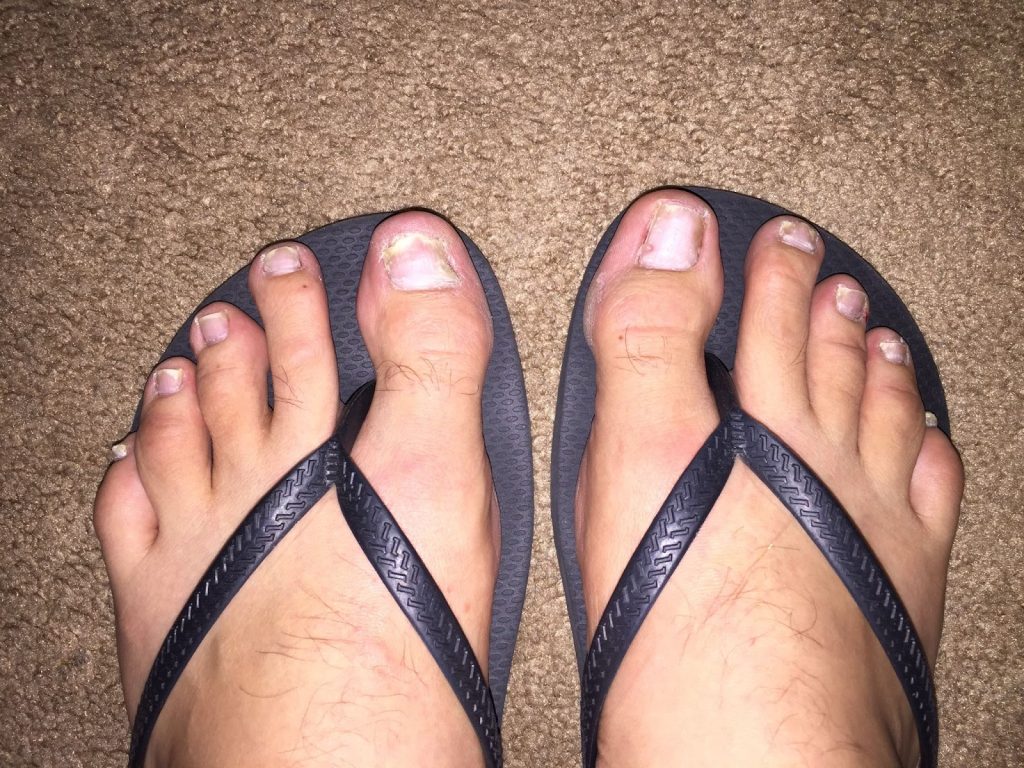
The following symptoms characterize this type of disease:
- The nail separates from the nail bed.
- Nail surface with small holes.
- The nail turns yellowish-brown.
- Nails that are tender and painful.
- Nail psoriasis can also cause the nails to become thickened and distorted.
Nail fungus is also common in patients with nail psoriasis. Due to its difficulty penetrating the nail bed, topical medications are not as effective in treating nail psoriasis. Injections of steroid hormones, light therapy, and oral medications are therefore used to treat the condition. A short nail cut is also beneficial.
4. Guttate psoriasis
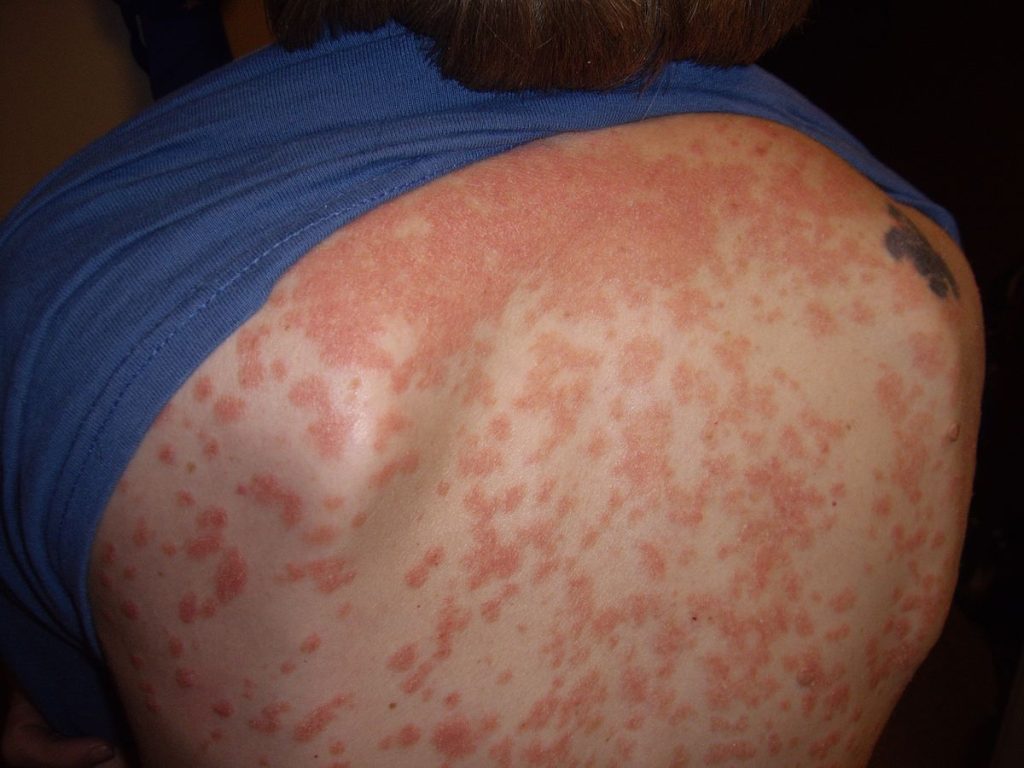
Credit: en.wikipedia.org
There is a low percentage of psoriasis cases characterized by guttate psoriasis, typically occurring during childhood or early adulthood. A characteristic feature of this disease is the development of minor, pinkish-red rashes that appear mainly on the trunk, upper arm, thighs, or scalp and are much thinner than plaque psoriasis.
Guttate psoriasis is thought to be caused by a bacterial infection. The bacteria stimulate the immune system, which in turn causes the overproduction of skin cells. This overproduction of skin cells leads to the formation of scaly patches on the skin. The most common triggers are sore throats, tonsillitis, skin trauma, stress, and certain medications.
If left untreated, this type of psoriasis may disappear within a few weeks, but it may be stubborn and require prolonged treatment.
Treatment for guttate psoriasis generally includes oral antibiotics to clear the infection and topical corticosteroids to reduce inflammation. In some cases, ultraviolet light therapy may also be used.
5. Pustular psoriasis
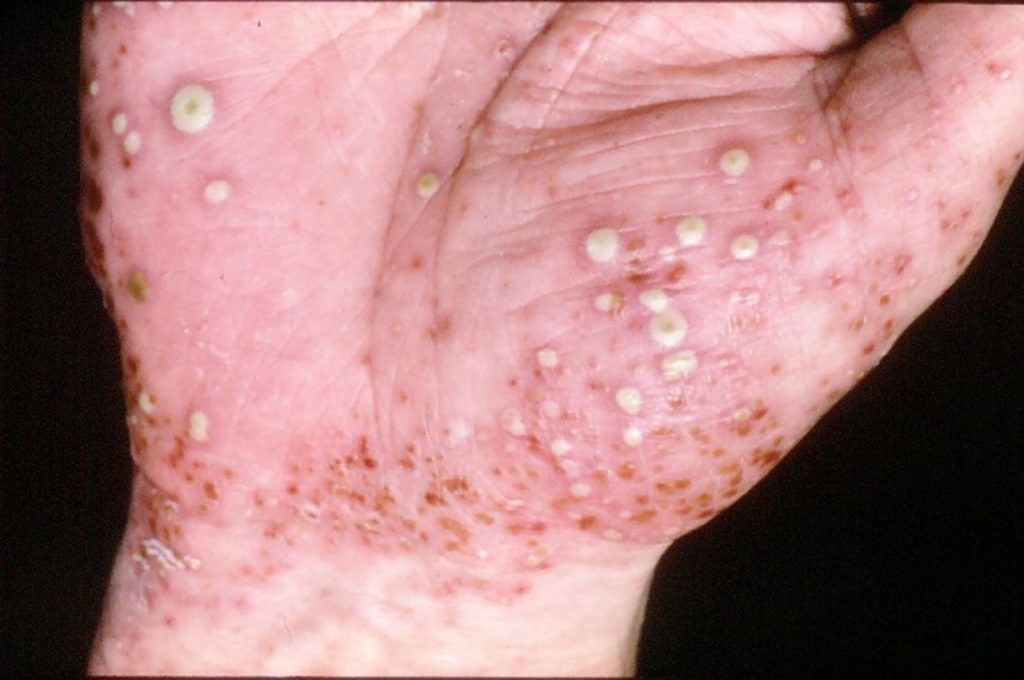
Credit: papaa.org
The condition of pustular psoriasis occurs primarily in adults and is characterized by pustular nodules and red skin. Despite the fact that it looks contagious, it’s not. It is common for patients to experience redness, blistering, and pus when they are suffering from this type of psoriasis. Typically, it affects a small body area but may also affect the entire body.
The symptoms of pustular psoriasis can be severe and require immediate medical attention. Pustular psoriasis can cause fever, chills, nausea, muscle weakness, and rapid heartbeat.
The most common causes are:
- Unprotected exposure to ultraviolet radiation.
- Drugs administered topically or systemically, especially steroids.
- Abrupt withdrawal of systemic medications or use of strong topical steroids over a large area of the body.
- Certain chemicals.
- Infections.
- Stress.
In addition to being the rarest form of psoriasis, it is also the most dangerous.
Several different treatment options are available for pustular psoriasis, and the most effective approach depends on the severity of the disease. Topical treatments such as corticosteroids and calcipotriene are often used to treat mild forms of the disease. More severe cases may require systemic therapies such as methotrexate or cyclosporine. In some cases, phototherapy may also be used to help clear up the condition.
6. Erythroderma psoriasis
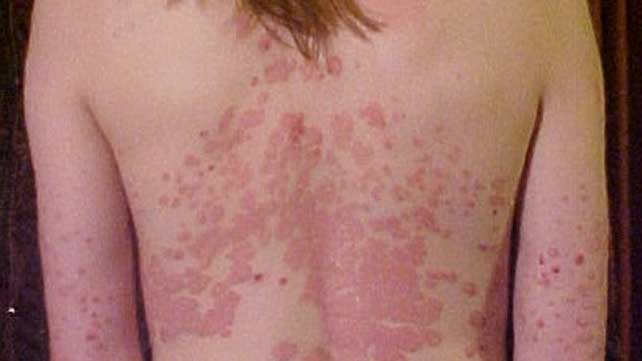
Credit: healthline.com
A condition known as erythrodermic psoriasis is characterized by intense redness that occurs across a large portion or all of the body.
Several serious complications are associated with this type of psoriasis, including protein and fluid loss, infection, pneumonia, and congestive heart failure.
In general, the following factors contribute to the condition:
- An abrupt discontinuation of treatment for psoriasis.
- A medication-related allergic reaction.
- Burns caused by excessive sun exposure.
- Infections.
- If psoriasis is not appropriately controlled for an extended period of time, erythrodermic psoriasis can also develop.
7. Psoriatic arthritis
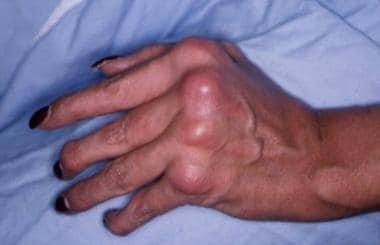
Credit: emedicine.medscape.com
One of the most debilitating forms of arthritis is psoriatic arthritis. This form of arthritis is caused by the same thing that causes psoriasis – an overactive immune system. When the immune system is working correctly, it helps to protect the body from infection. But in people with psoriasis, the immune system attacks healthy cells, causing inflammation and pain, in this case, in the joints.
Hands, feet, and knees are the most commonly affected joints by psoriatic arthritis. Mild to severe symptoms include joint pain, stiffness, swelling, and deformities. In some cases, arthritis can be so severe that it leads to disability.
As of right now, there is no cure for psoriatic arthritis. The condition can be treated with medication, physical therapy, and lifestyle changes.
To sum up
In conclusion, psoriasis is a complex condition with different types that can present in a variety of ways. The disease cannot be cured, but there are numerous effective treatments available. If you think you may have psoriasis, it is important to see a doctor so they can determine the best course of treatment for you.


